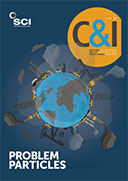Australian researchers have found a solution for one of the biggest stumbling blocks preventing zinc-air batteries from overtaking conventional lithium-ion batteries as the power source of choice in electronic devices. Their widespread use has been hindered up till now by difficulties associated with recharging.
Zinc-air batteries are powered by zinc metal and oxygen from the air. Due to the global abundance of zinc, these batteries are much cheaper to produce than lithium-ion batteries, and they can also store more energy - theoretically five times more than that of lithium-ion batteries. They are also much safer and more environmentally friendly. They are currently used in in hearing aids and some film cameras and railway signal devices.
However, recharging zinc-air batteries is difficult. Researchers have been hunting for catalysts that successfully reduce and generate oxygen during discharging and charging for some time. Now researchers from the University of Sydney and Nanyang Technological University have outlined a new three-stage method to overcome this problem.
Metal oxides of earth-abundant elements, such as iron, cobalt and nickel, are promising catalysts to overcome the sluggish oxygen evolution and oxygen reduction reaction in many electrochemical energy-conversion devices. However, it is difficult to control their catalytic activity precisely.
‘Until now, rechargeable zinc-air batteries have been made with expensive precious metal catalysts, such as platinum and iridium oxide,’ says lead author Yuan Chen from the University of Sydney’s Faculty of Engineering and Information Technologies. His new method can be used to create catalysts for building rechargeable zinc-air batteries from scratch.
The three-stage synthesis strategy produces a family of hybrid materials comprising amorphous bimetallic oxide nanoparticles anchored on N-doped reduced graphene oxide (Advanced Materials, DOI: 10.1002/adma.201701410). ‘Our method produces a family of new high-performance and low-cost catalysts,’ says Chen. These new catalysts are produced by controlling simultaneously the composition, size and crystallinity of the metal oxide nanoparticles. They can then be applied to build rechargeable zinc-air batteries.
The team says that trials of zinc-air batteries developed with the new catalysts demonstrated excellent rechargeability, including less than a 10% battery efficacy drop over 60 discharging/charging cycles of 120 hours. ‘We are solving fundamental technological challenges to realise more sustainable metal-air batteries for our society,’ Chen adds.





